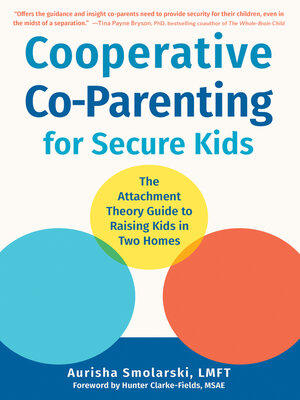The Attachment Theory Guide to Co-Parenting
ebook ∣ Building a Secure Foundation for Your Child in Two Homes
By Aurisha Smolarski

Sign up to save your library
With an OverDrive account, you can save your favorite libraries for at-a-glance information about availability. Find out more about OverDrive accounts.
Find this title in Libby, the library reading app by OverDrive.



Search for a digital library with this title
Title found at these libraries:
| Loading... |
Discover how attachment theory can help you better understand yourself and your ex, improve your co-parenting skills, and raise happy, emotionally secure kids!
If you're like most parents, you want—more than anything—for your child to feel safe, loved, and confident that their needs will be met. However, this can be difficult when you're sharing custody with an ex. Instead of working together, you may feel at war with one another, and in the end, nobody wins—especially your child. So, how can you ensure that you and your ex are on the same page when it comes to co-parenting?
With this unique and highly practical guide, you'll learn the science of attachment theory, and how to apply it to your co-parenting relationship. Secure attachment refers to the bond between a parent and young child, which gives that child a stable and secure basis from which to negotiate life going forward. A child with a secure base can weather the storms of trauma and life changes —such as those caused by divorce—much more easily than a child who doesn't. Co-parents who understand this principle have a significant advantage, because they can learn how to provide secure attachment for their child, even while no longer living under the same roof.
You'll learn the "principles of engagement" for successful co-parenting:
Co-parenting is often difficult, and sometimes it can feel like a battle. But it doesn't have to be this way. Using the insight and wisdom in this guide, you'll learn how to build a solid and supportive co-parenting team. And the real winner will be your kid!






